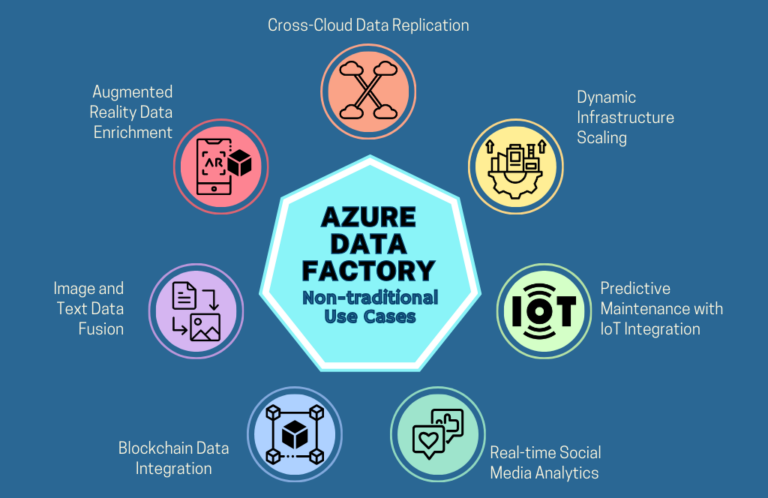Non-Traditional Use Cases of Azure Data Factory
In the dynamic landscape of data management, Azure Data Factory (ADF) stands as a powerful tool. ADF is employed for orchestrating and automating data workflows. Its conventional use cases include data extraction, transformation, and loading (ETL). Now, savvy developers and data engineers at Hoonartek and elsewhere are discovering creative ways to leverage Azure Data Factory. In this blog, we’ll explore some unusual use cases that showcase the versatility of ADF beyond its traditional boundaries.
Non-Traditional Use Cases

Cross-Cloud Data Replication
For businesses operating in a multi-cloud environment, employing ADF can create cross-cloud data replication pipelines. This enables seamless data movement and synchronization between different cloud platforms. Thus, ensuring data consistency and availability across diverse infrastructures.
Dynamic Infrastructure Scaling
Traditionally, Azure Data Factory is used for managing and transforming data. But, by integrating it with Azure Logic Apps and Azure Functions, you can create pipelines that dynamically scale your infrastructure based on workload demands. This ensures optimal resource utilization and cost efficiency. Thus, automatically adjusting to varying data processing needs.
Predictive Maintenance with IoT Integration:
By integrating with Azure IoT services, ADF can be an integral part of predictive maintenance strategies. Orchestrating data flows from IoT devices through ADF helps organizations analyse historical data. They can also predict equipment failures, and schedule proactive maintenance, thereby minimizing downtime and reducing operational costs.
Have you found your Azure Data Factory use case?
Hoonartek changes the way you approach data in cloud. Connect with data and cloud specialists and work with your team.
Real-time Social Media Analytics
Azure Data Factory can help to gather real-time insights from social media platforms. By integrating ADF with Azure Stream Analytics, developers can create pipelines that collect and analyse social media data. Thus, providing businesses with up-to-the-minute insights into trends, sentiment analysis, and user engagement.
Blockchain Data Integration:
In decentralized technologies, ADF can play a role in blockchain data integration. By connecting to blockchain networks and orchestrating the flow of data between the blockchain and other systems, developers can streamline processes such as supply chain transparency, smart contract management, and secure data provenance.
Image and Text Data Fusion:
Unleash the power of Azure Cognitive Services by integrating them with ADF. This allows for the creation of pipelines that fuse image and text data. It opens the door to innovative applications such as automated content tagging, visual sentiment analysis, and image-to-text conversions.
Augmented Reality Data Enrichment:
Merge virtual and physical worlds by integrating ADF with augmented reality (AR) platforms. This can help to enrich real-world objects with data, creating immersive experiences. For example, using ADF to manage data flow from product databases to AR apps for better product information.


